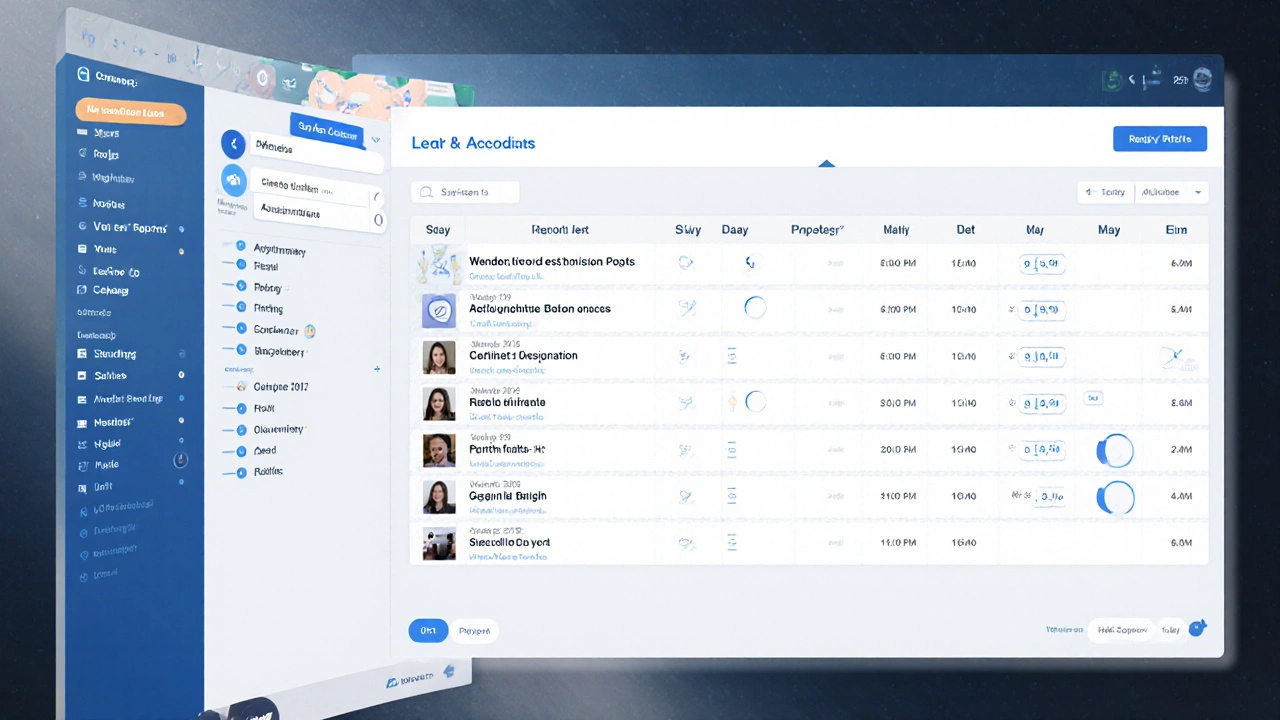Asynchronous Learning Flexibility Calculator
Personalized Tip
When people think of distance learning, they often picture students stuck in front of a screen, watching a video lecture from years ago. But that’s not what most learners are doing today. The most popular type of distance learning isn’t just one thing-it’s a mix, but one model stands out clearly: asynchronous online learning.
Why Asynchronous Learning Dominates
Asynchronous learning means you access materials, complete assignments, and participate in discussions on your own schedule. No live classes. No fixed meeting times. You log in when it fits your day-before work, during lunch, after putting the kids to bed. This flexibility is why it’s the go-to choice for over 70% of adult learners worldwide, according to the 2024 Global Online Education Survey. Think about it: most people taking distance courses aren’t teenagers in school. They’re working parents, shift workers, caregivers, or people trying to switch careers. They can’t drop everything at 9 a.m. on Tuesdays. They need control. Asynchronous platforms like Moodle, Canvas, and Blackboard let them do just that. A nurse in Brisbane finishing her bachelor’s degree while working night shifts? She watches lectures on her phone during breaks. A single dad in Perth studying accounting after his kids are asleep? He submits assignments at 11 p.m. without asking permission. That’s asynchronous learning in action-and it’s not just convenient. It’s essential.How It Works in Practice
Asynchronous courses don’t mean you’re left alone. They’re built with structure. Here’s what a typical week looks like:- Monday: You download the week’s reading materials and video lectures (usually 30-60 minutes total).
- Wednesday: You post a response to a discussion prompt in the course forum.
- Friday: You review classmates’ posts and reply to at least two.
- Sunday: You submit your assignment before the deadline.
What About Live Online Classes?
Synchronous learning-where everyone logs in at the same time for a Zoom lecture-still exists. But it’s far less common. It’s mostly used in:- Professional certification programs (like PMP or CFA prep)
- Language learning with live tutors
- Small-group graduate seminars

MOOCs and the Rise of Self-Paced Learning
Massive Open Online Courses (MOOCs) like Coursera, edX, and FutureLearn are built on asynchronous principles. They don’t just offer flexibility-they thrive on it. Over 200 million people have enrolled in MOOCs since 2012, and the majority complete courses on their own timeline. What’s interesting? Most learners don’t even finish the whole course. But they don’t need to. Many take one or two modules to learn a specific skill-like Excel pivot tables, Google Analytics, or Python basics. They download the materials, watch what they need, and move on. That’s not dropout behavior. That’s smart, goal-driven learning. MOOCs have made asynchronous learning accessible to people who can’t afford traditional degrees. A single course on data analysis might cost $50. A university degree? $20,000. Asynchronous learning isn’t just popular-it’s democratizing education.Why Other Models Don’t Compare
Let’s clear up some myths. TV-based distance learning? Used in rural areas decades ago. Now, it’s nearly extinct. Fewer than 1% of learners use broadcast video for education in 2025. Correspondence courses? Still around, mostly for vocational certifications in places with poor internet. But they’re slow. A student might wait weeks for feedback. Asynchronous digital platforms give feedback in hours. Hybrid learning? This mixes in-person and online. But hybrid isn’t pure distance learning. It’s a blend. The question is about distance learning-meaning fully remote. So hybrid doesn’t count here. The real competition isn’t between types of remote learning. It’s between flexibility and rigidity. And flexibility wins.
Who Benefits Most?
Asynchronous learning isn’t for everyone-but it’s perfect for:- Parents juggling childcare and work
- People in different time zones
- Those with unpredictable work hours (healthcare, retail, hospitality)
- Learners with disabilities who need more time to process content
- Anyone who learns better without pressure to perform on a schedule
What’s Next?
The future of distance learning isn’t about more live classes. It’s about smarter tools that support self-paced learning:- AI tutors that answer questions anytime
- Adaptive quizzes that adjust to your pace
- Microlearning modules (5-10 minute videos) you can watch between meetings
- Offline access to course materials for low-bandwidth areas
Final Thought
The most popular type of distance learning isn’t flashy. It doesn’t have a viral TikTok trend. It doesn’t require fancy tech. It’s quiet, reliable, and flexible. It’s asynchronous learning. And it’s working-for millions of people, every single day.Is asynchronous learning the same as self-paced learning?
Yes, essentially. Asynchronous learning means you control when you learn, which is the definition of self-paced. Not all self-paced learning is digital (like reading a textbook), but in today’s context, asynchronous online learning is the most common form of self-paced education.
Can you get a degree entirely through asynchronous learning?
Absolutely. Many accredited universities now offer full bachelor’s and master’s degrees online with no live classes required. Programs from institutions like Southern New Hampshire University, the University of the People, and Australia’s Open Universities Australia are fully asynchronous and recognized globally.
Do employers value asynchronous online degrees?
Yes, especially if the institution is accredited. Employers care more about the skills you gained and the degree’s credibility than whether classes were live or recorded. A 2024 LinkedIn survey found that 89% of hiring managers view online degrees from reputable schools as equal to on-campus ones.
What if I need help right away?
Most platforms offer multiple support options: email responses from instructors, discussion forums with teaching assistants, chatbots for common questions, and scheduled office hours you can book. You won’t be left hanging. You just won’t be forced to wait for a live session that might not fit your schedule.
Is asynchronous learning harder than traditional classes?
It’s not harder in content, but it demands more discipline. Without fixed class times, you need to manage your own deadlines. That’s why successful learners use calendars, set reminders, and treat their study time like a job. The material isn’t tougher-it’s just more self-directed.

